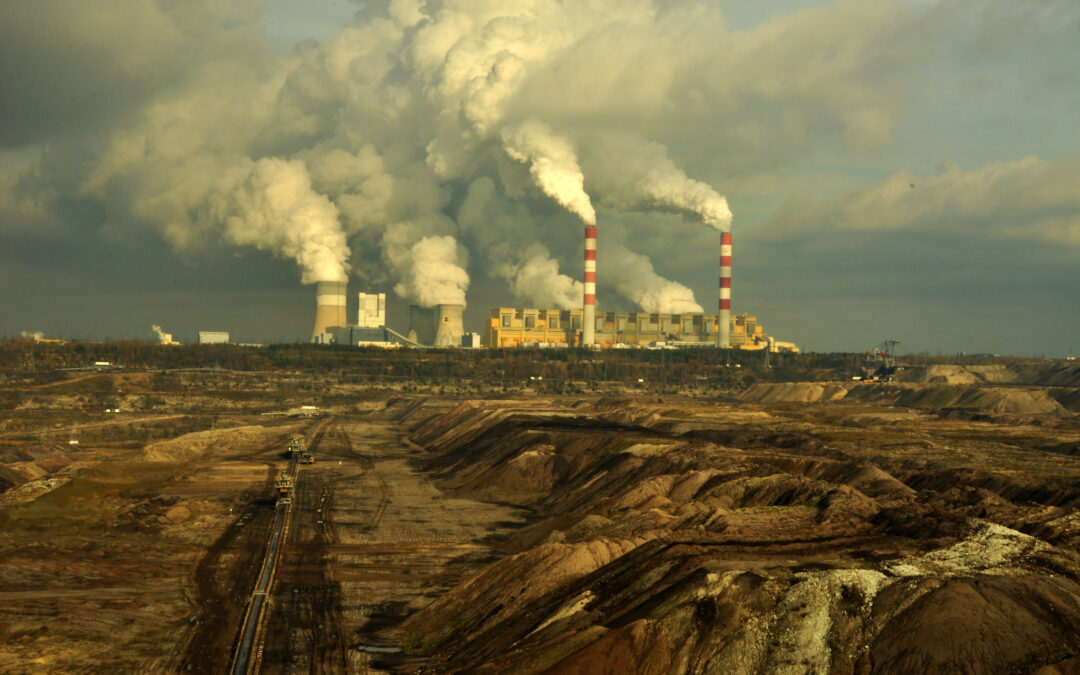Three Polish coal power plants were among the top ten biggest emitters of carbon dioxide (CO2) in the European Union last year, up from two in 2019. Bełchatów power station in central Poland once again topped the ranking as by far the bloc’s biggest single emitter.
Six of the remaining nine places in the list, which was compiled by climate think tank Ember based on EU Emissions Trading System (ETS) data, were taken by German coal power plants. The final spot went to an Austrian steel plant.
Data: Ember (*all sources are coal power stations apart from Stahl Linz, which is a steel plant)
Bełchatów, which like the other Polish power stations on the list is run by a state-owned company, saw its CO2 emissions drop by 8.1% year-on-year to reach 30.1 million tonnes (or megatonnes, mt). That still put it well ahead of Germany’s Nuerath plant, which was in second place with 18.7mt.
Last year, documents published by Greenpeace Polska indicated that Bełchatów’s operator, energy group PGE, is drawing up plans to begin gradually shutting down the plant after 2030 due to shrinking lignite resources nearby.
Moving up to fourth on the list was the Kozienice hard coal power station, located south of Warsaw, which emitted 13.8mt of CO2. Meanwhile, the Opole plant in southern Poland entered the top 10 after a 38.1% year-on-year increase in CO2 emissions moved it into ninth.
Poland still generates nearly 73% of its electricity from coal, the highest proportion in the EU. Last year, it also overtook Germany as the EU’s biggest generator of electricity from coal in absolute terms.
The data also showed that Poland generates as much electricity from coal as the rest of the EU (excluding Germany) combined.
In November, Ember identified Poland as one of five member states – along with Belgium, Bulgaria, the Czech Republic and Romania – that are “blocking the EU electricity transition”. Its analysis indicated that by 2030 Poland would have the EU’s dirtiest electricity production.
Poland is the only member state not to have signed up to the EU’s target of reaching climate neutrality by 2050. Warsaw argues that it needs more generous funding to facilitate its transition away from coal.
However, the Polish government has nevertheless taken steps towards a lower-carbon future. Its “Polish Energy Policy 2040” plan, adopted in February, includes reducing reliance on coal, expanding renewables, and creating the country’s first nuclear power plants.
A landmark agreement with unions last year committed Poland to closing coal mines by 2049. In recent months Poland has set records for both wind and solar energy generation.
Last year, domestic hard coal production in Poland decreased by approximately 7.2 million tonnes and, on average, 54.18 zloty was lost by Polish mines on each tonne of coal sold, with the total losses exceeding 2.8 billion zloty, reports Business Insider Polska.
Poland has also been importing record amounts of electricity, with domestic power production in 2019 falling to its lowest level in five years.
Yet, at the same time, Poland has still pushed ahead with plans to open new coal mines. Earlier this year, in an unprecedented move, the Czech Republic filed a case against Poland at the European Court of Justice in an attempt to stop the expansion of a coal mine along their shared border.
Main image credit: Bogusz Bilewski/Greenpeace Polska (under CC BY-NC-ND 2.0)

Juliette Bretan is a freelance journalist covering Polish and Eastern European current affairs and culture. Her work has featured on the BBC World Service, and in CityMetric, The Independent, Ozy, New Eastern Europe and Culture.pl.




















